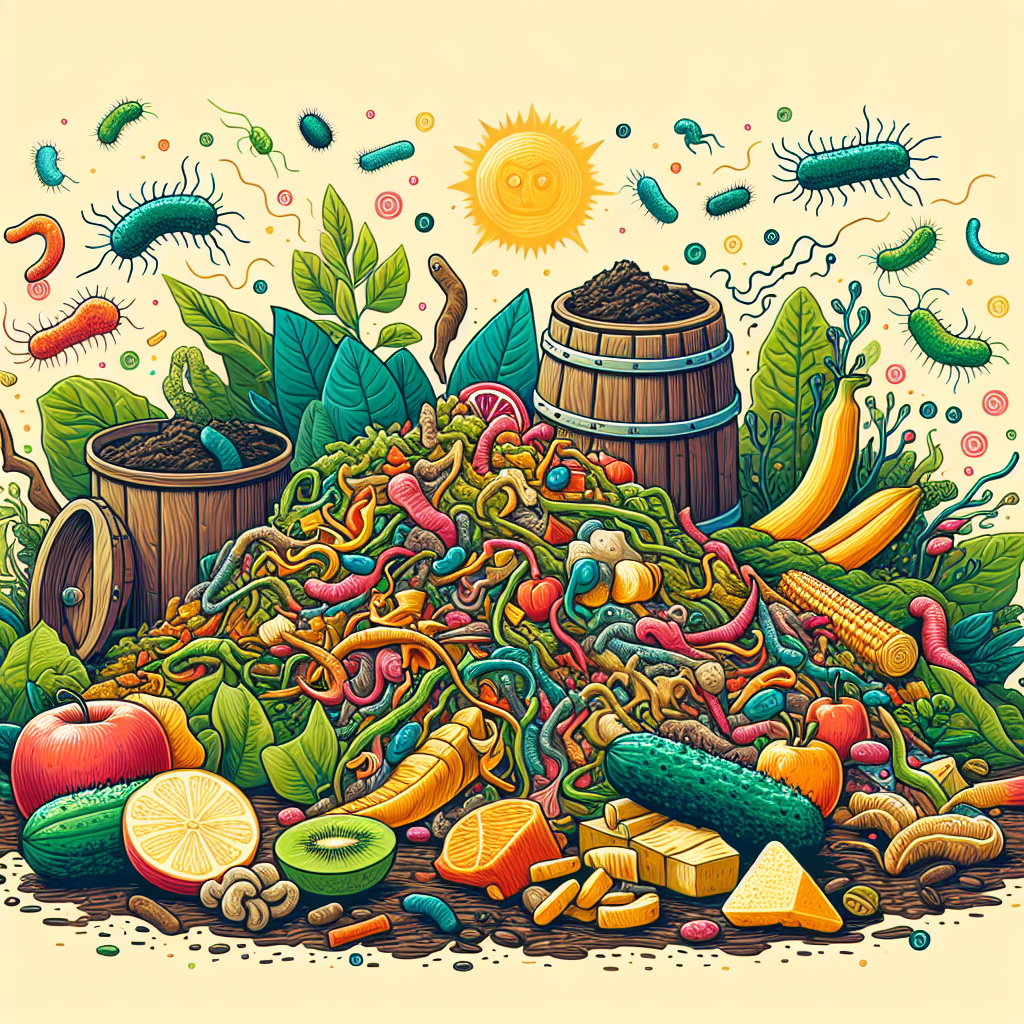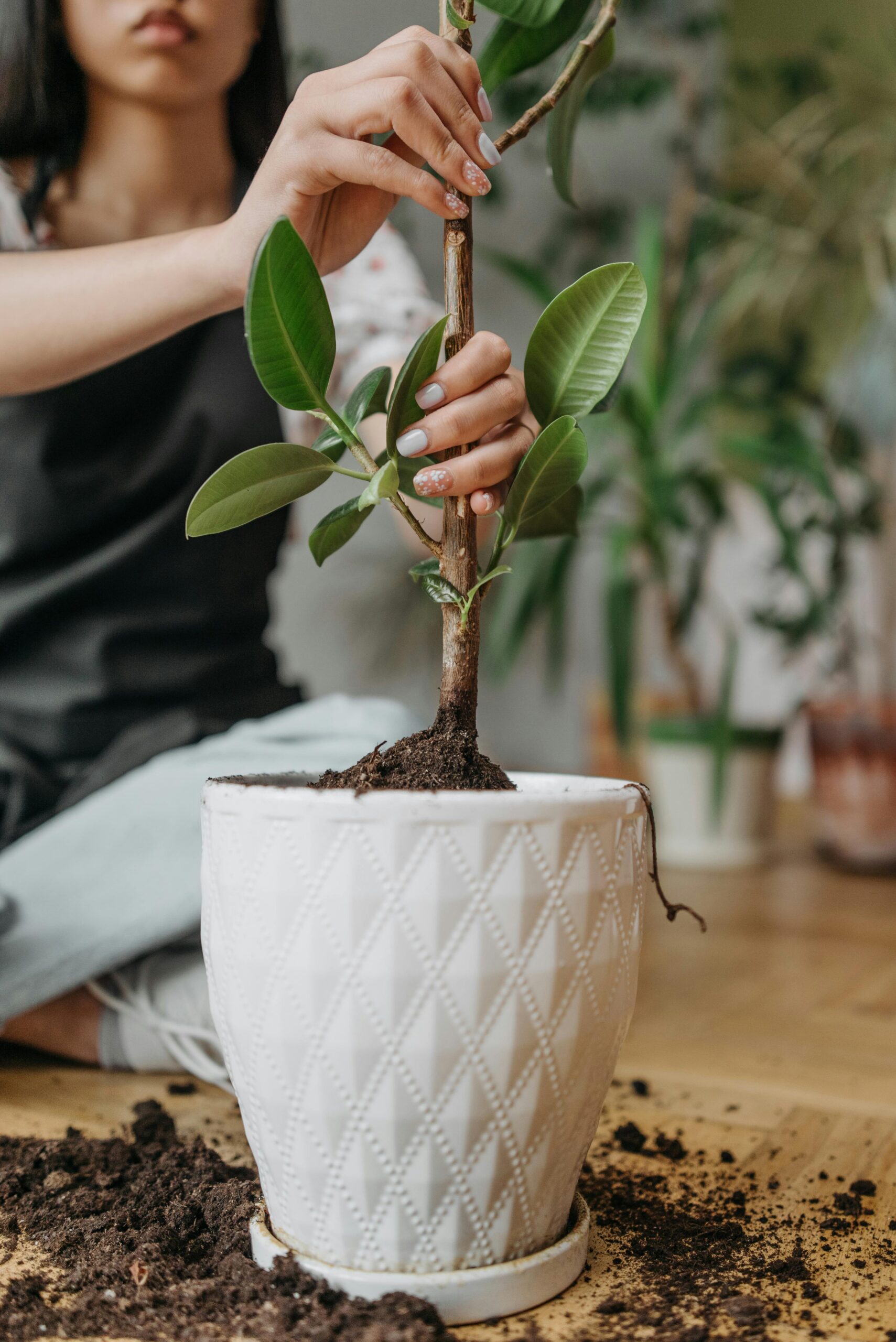Imagine having a simple yet effective solution for turning your kitchen scraps and garden waste into nutrient-rich soil. That’s where a composter comes in. This article will take you on a fascinating journey into the inner workings of a composter, revealing the secret behind its magic. Discover how this eco-friendly device harnesses the power of natural decomposition to transform your organic waste into a valuable resource for your plants and garden. Get ready to unlock the wonders of composting and join the sustainable revolution in your own backyard.
What is a composter?
A composter is a device or system that allows you to transform organic waste into nutrient-rich compost. It is a sustainable and eco-friendly way to manage waste and contribute to the health of the environment. Composting is the natural process of decomposition, in which microorganisms break down organic materials, such as food scraps, yard waste, and paper, into a dark, crumbly substance known as compost. Composting can be done on a small scale, such as in a backyard, or on a larger scale in municipal composting facilities.
Definition
A composter is a container or bin specifically designed for the purpose of composting organic materials. It provides the optimal conditions for the decomposition process to occur efficiently. Composters come in various shapes and sizes, from simple backyard bins to more complex systems with aeration and drainage mechanisms. The goal of a composter is to create the ideal environment for microorganisms to break down organic waste and transform it into nutrient-rich compost.
Types of composters
There are several different types of composters available, each with its own advantages and features. Some common types include:
-
Backyard Bin: This is the simplest and most common type of composter. It is usually a container made of plastic or wood with a lid to keep animals out and moisture in.
-
Tumbler: A tumbler composter is a bin that can be rotated, allowing for easy mixing and aeration of the compost. It is particularly useful for those with limited space or mobility issues.
-
Worm Bin: Also known as vermicomposters, these bins utilize worms to speed up the decomposition process. The worms consume organic waste and produce nutrient-rich castings, which can be used as compost.
-
In-Ground Composter: This type of composter is buried partially or completely in the ground. It takes advantage of the natural heat and moisture of the soil to aid in the decomposition process.
-
Electric or Automatic Composter: These composters use electricity or an automated system to control temperature, moisture, and aeration. They are suitable for those who want a hands-off approach to composting.
Why use a composter?
Composting offers a wide range of benefits, both for individuals and the environment as a whole. By choosing to compost, you can make a positive impact on waste management and soil quality.
Benefits of composting
-
Reduces waste: Composting allows you to divert a significant amount of organic waste from landfills. Instead of contributing to the growing waste problem, you can recycle your kitchen scraps and yard waste into valuable compost.
-
Improves soil quality: Compost is a nutrient-rich soil amendment that helps to improve the quality and fertility of your garden soil. It provides essential nutrients, improves soil structure, and enhances water retention and drainage. Using compost in your garden can lead to healthier plants, increased yield, and reduced need for chemical fertilizers.
Reducing waste
One of the main motivations for composting is the desire to reduce waste. In many parts of the world, organic waste makes up a significant portion of the total waste generated. By composting your kitchen scraps, yard waste, and other organic materials, you can significantly reduce the amount of waste that goes to landfill. This not only conserves valuable landfill space but also reduces greenhouse gas emissions produced by decomposing organic waste in landfills.
Improving soil quality
Compost is often referred to as “black gold” due to its numerous benefits for soil health. When you add compost to your garden soil, it enriches it with essential nutrients, including nitrogen, phosphorus, and potassium. These nutrients are slowly released, providing a steady supply to plants and promoting healthy growth. Compost also improves soil structure by enhancing its ability to retain moisture and nutrients while allowing for proper drainage. Additionally, compost encourages the growth of beneficial microorganisms, earthworms, and other soil organisms, which further improve soil health.
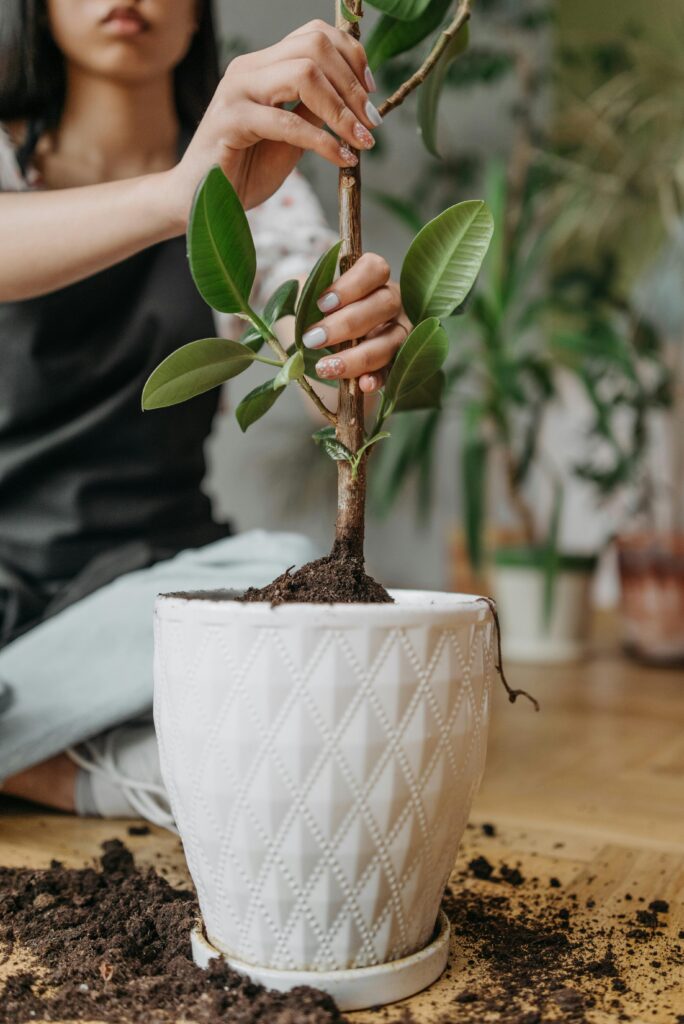
This image is property of images.pexels.com.
The process of composting
Composting is a natural process that involves the decomposition of organic materials into compost. While it may seem complicated, it is actually a straightforward process that can be broken down into several key steps.
1. Adding organic materials
The first step in the composting process is to add organic materials to your composter. These can include kitchen scraps (such as fruit and vegetable peels, coffee grounds, and eggshells), yard waste (such as leaves, grass clippings, and small twigs), and small amounts of paper and cardboard (such as shredded newspaper or cardboard rolls). It’s important to maintain a balance of “green” materials (rich in nitrogen) and “brown” materials (rich in carbon) to provide the right conditions for decomposition.
2. Microbial decomposition
Once the organic materials are added to the composter, microbial decomposition begins. Bacteria, fungi, and other microorganisms naturally present in the organic waste break down the material into simpler substances. These microorganisms consume the carbon and nitrogen-rich materials, releasing heat, carbon dioxide, and water vapor as byproducts.
3. Oxygen and moisture
To support the activity of the microorganisms, oxygen and moisture are essential. Adequate oxygen levels can be maintained through regular turning or mixing of the compost pile, allowing air to circulate. Moisture is important to keep the compost pile moist but not saturated. It should feel like a damp sponge when squeezed.
4. Temperature and time
During the decomposition process, the temperature of the compost pile will increase. This is a result of the microbial activity and is an indication that the composting process is progressing well. Ideally, the temperature should reach between 120-160°F (49-71°C) to ensure effective decomposition and kill any potential pathogens or weed seeds. The length of time required for composting varies depending on factors such as the materials used, the composting method, and environmental conditions.
5. Turning and mixing
Turning or mixing the compost pile helps to ensure even decomposition and provides oxygen to the microorganisms. This can be done using a pitchfork or shovel, by transferring the compost from one spot to another, or by using a tumbler composter that can be easily rotated. Regular turning and mixing every few weeks allow for better aeration and homogenization of the compost.
Key components of a composter
To effectively compost organic materials, a composter should have a few key components and features. These components work together to create the optimal conditions for efficient decomposition.
1. Container or bin
The container or bin is the main structure of a composter. It holds the organic waste and provides a controlled environment for the composting process. Containers can be as simple as a homemade wooden box or as sophisticated as a commercially available composter with features like built-in aeration and drainage systems.
2. Aeration system
Aeration is crucial for supplying oxygen to the microorganisms and promoting aerobic decomposition. Many composters have built-in aeration systems, such as ventilation holes or perforated walls, to allow for proper airflow. If your composter doesn’t have these features, regular turning and mixing of the compost pile can provide the necessary aeration.
3. Drainage system
Proper drainage is important to prevent excessive moisture buildup in the compost pile, which can lead to anaerobic conditions and unpleasant odors. Some composters have built-in drainage systems or perforated bottoms to allow excess moisture to drain out. If your composter doesn’t have this feature, it’s important to ensure adequate drainage by layering the compost pile with twigs or straw at the bottom.
4. Compost pile accessories
Certain accessories can enhance the composting process. These include compost starters or accelerators, which contain beneficial microorganisms that speed up decomposition, and compost thermometers, which help monitor the temperature of the compost pile. Additionally, tools like pitchforks or shovels are useful for turning and mixing the compost pile.
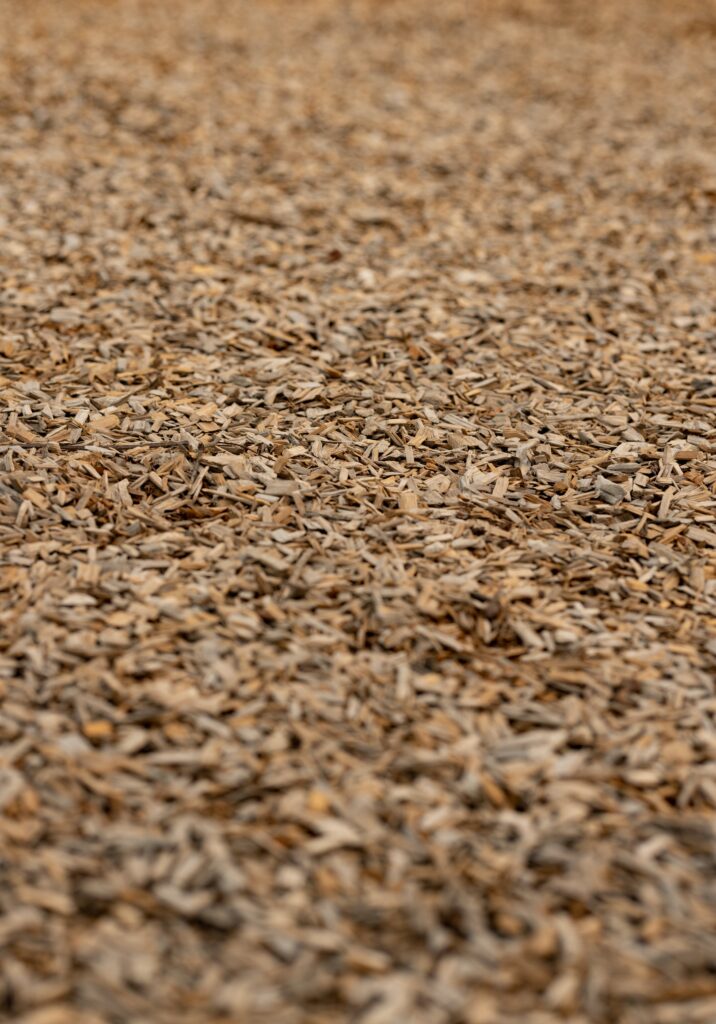
This image is property of images.pexels.com.
Choosing the right location for a composter
The location of your composter can significantly impact its performance and convenience. When choosing a spot for your composter, consider the following factors:
1. Sunlight exposure
Most composters benefit from some sunlight exposure as it helps to heat up the compost pile and speed up decomposition. However, excessive exposure to direct sunlight can cause the compost pile to dry out too quickly. Choose a location that receives partial sunlight for optimal conditions.
2. Accessibility and convenience
Place your composter in a location that is easily accessible to you. It should be convenient to add organic materials, turn or mix the compost, and harvest the finished compost. Consider the proximity to your kitchen for easy disposal of kitchen scraps and convenience when using the compost in the garden.
3. Odor control
While a well-maintained and properly managed compost pile should not produce strong odors, it’s still important to choose a location that minimizes any potential smells. Keep your composter away from windows or living areas to avoid any unwanted odors.
What can be composted?
Composting accepts a wide range of organic materials, but some materials are more suitable for composting than others. Here are some common items that can be composted:
Organic kitchen waste
Kitchen scraps, such as fruit and vegetable peels, coffee grounds, tea bags, eggshells, and nutshells, are excellent additions to the compost pile. Avoid adding oils, fats, and dairy products, as they can attract pests and create odors.
Yard waste
Grass clippings, leaves, small twigs, plant trimmings, and other yard waste can be composted. It’s important to avoid adding diseased plants or invasive weeds to the compost pile, as this can spread diseases or weed seeds.
Small amount of paper and cardboard
Paper and cardboard can be composted in small amounts. Shredded newspaper, cardboard rolls, and paper towels can all be added to the compost pile. Avoid adding glossy or heavily inked paper, as it may contain toxic chemicals.
Avoiding meat and dairy products
While many organic materials can be composted, it’s generally recommended to avoid meat, fish, dairy products, and bones. These materials can attract pests and produce unpleasant odors. However, if you have access to a commercial-scale composter or a vermicomposter, some of these materials may be suitable for composting under specific conditions.
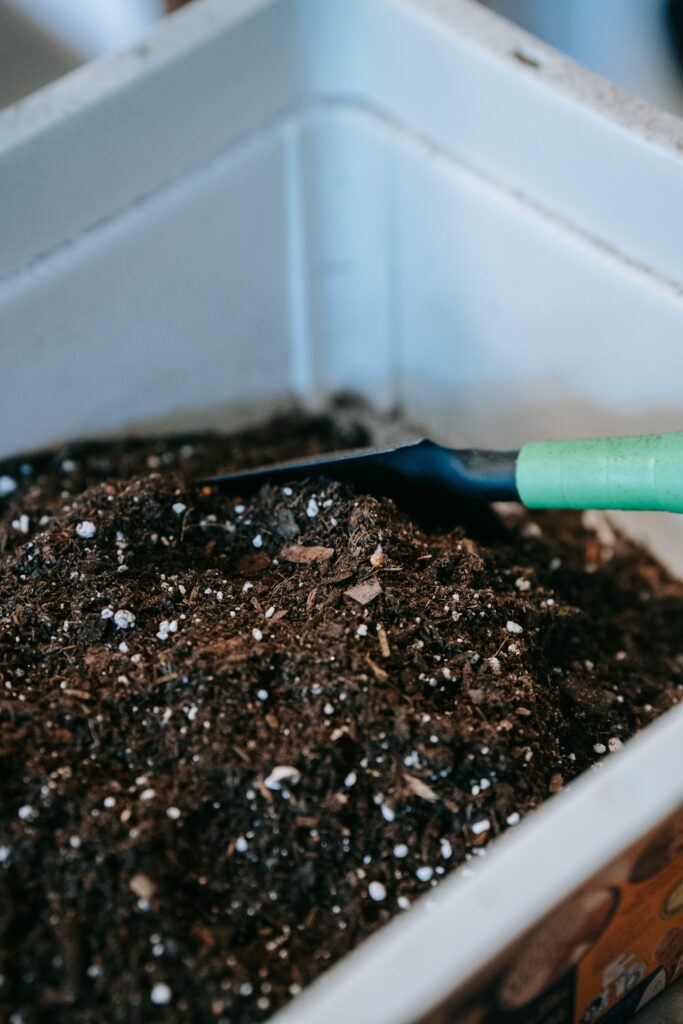
This image is property of images.pexels.com.
Tips for successful composting
To ensure successful composting, there are a few key tips to keep in mind:
1. Balance carbon and nitrogen
A balanced ratio of carbon-rich “brown” materials (such as leaves, straw, and shredded newspaper) and nitrogen-rich “green” materials (such as kitchen scraps and grass clippings) is essential for proper decomposition. Aim for a carbon-to-nitrogen ratio of about 25-30 parts carbon to 1 part nitrogen.
2. Maintain moisture levels
Proper moisture is essential for the composting process. The compost pile should be moist but not soggy. If it’s too dry, add water. If it’s too wet, add dry materials like leaves or shredded paper to absorb excess moisture.
3. Proper aeration
Providing adequate airflow to the compost pile is important to maintain aerobic conditions. Turn or mix the compost pile regularly to ensure good aeration. This helps to distribute oxygen and prevent the development of anaerobic conditions, which can lead to foul odors.
4. Avoiding pest problems
To prevent pests, cover food waste with a layer of leaves, grass clippings, or finished compost. This helps to deter animals and insects from being attracted to the compost pile. Avoid adding meat, fish, dairy products, oils, fats, and cooked food to reduce the risk of pest problems.
5. Regularly turning and mixing
Regularly turning or mixing the compost pile helps to ensure even decomposition and provides oxygen to the microorganisms. Aim to turn or mix the compost pile every few weeks, or more frequently if using a tumbler composter. This helps to maintain proper aeration, speed up decomposition, and produce finished compost more quickly.
Using compost in the garden
Once the composting process is complete and you have finished compost, there are several ways you can use it in your garden:
1. Soil amendment
Mix compost into garden soil to improve its fertility and structure. Use compost as a top dressing or incorporate it into the soil before planting. This helps to replenish nutrients, improve water retention, and enhance overall soil health.
2. Mulching
Apply a layer of compost as mulch around plants and in garden beds. This helps to suppress weeds, conserve moisture, regulate soil temperature, and provide a slow-release source of nutrients.
3. Starting seedlings
Create a blend of compost and potting soil to use as a seed-starting mix. The compost provides essential nutrients and promotes healthy root growth for young seedlings.
4. Compost tea
Compost tea is created by steeping compost in water. The resulting liquid is rich in beneficial microorganisms and nutrients, making it an excellent natural fertilizer. It can be applied to plants as a foliar spray or added to the soil as a drench.
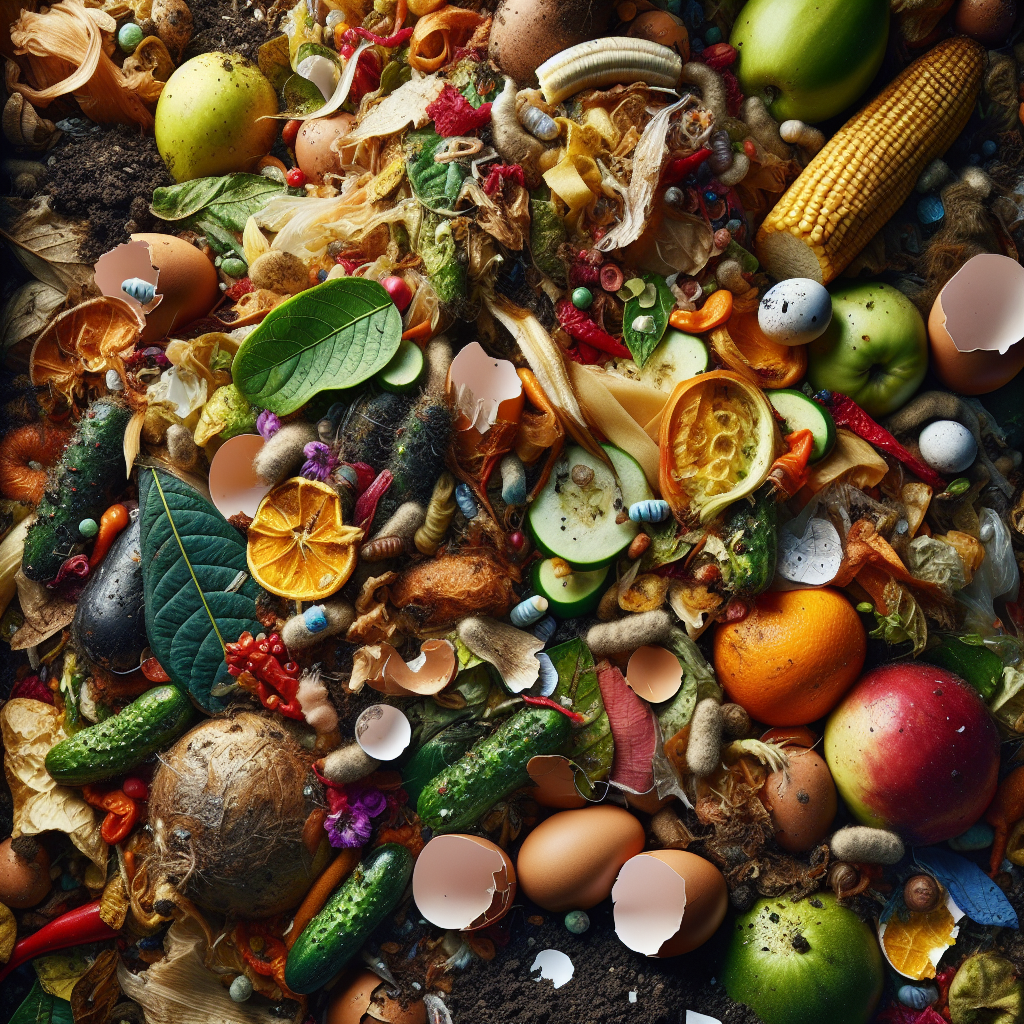
Common problems with composting
While composting is generally a straightforward process, there can be a few common problems that arise. Here are some issues you may encounter and how to address them:
1. Foul odor
A foul odor coming from the compost pile can indicate anaerobic conditions or an imbalance of materials. To address this issue, ensure that the compost pile is properly aerated by turning or mixing it regularly. Also, check the moisture levels and adjust if necessary. If the compost pile continues to emit a foul odor, it may require additional carbon-rich materials to rebalance the compost.
2. Slow decomposition
If you notice that your compost pile is taking longer to decompose, it may be due to a lack of oxygen or inadequate moisture levels. Ensure that the compost pile is properly aerated and moistened. Additionally, check the balance of carbon and nitrogen-rich materials and adjust if necessary. Adding a compost accelerator or turning the pile more frequently can also help speed up decomposition.
3. Pests and rodents
Pests and rodents can be attracted to the compost pile, particularly if meat, dairy, or oily foods are present. To deter pests, cover food waste with a layer of dry carbon-rich materials to create a barrier. Limit the amount of attractants and ensure proper composting conditions to discourage pests. If the problem persists, consider using a covered composter or vermicomposting to prevent access.
4. Excessive moisture
An overly wet compost pile can lead to anaerobic conditions, foul odors, and slow decomposition. To address excessive moisture, add dry carbon-rich materials, such as leaves or shredded paper, to absorb excess moisture and improve aeration. Turning or mixing the compost pile can also help distribute moisture more evenly.
5. Unbalanced compost
If your compost pile is not decomposing evenly or is producing an unbalanced compost, it may be due to an improper balance of carbon and nitrogen-rich materials. Adjust the ratio of “browns” to “greens” to achieve a balanced mix. Adding more carbon-rich materials, such as dry leaves or shredded paper, can help rebalance the compost pile.
Conclusion
Composting is a versatile and effective way to manage organic waste and enrich your garden soil. By using a composter, you can reduce waste, improve soil quality, and contribute to a more sustainable lifestyle. Remember to choose the right composter for your needs, follow the key components and tips for successful composting, and enjoy the benefits of nutrient-rich compost in your garden. With a little effort and dedication, you can turn your organic waste into valuable “black gold” and make a positive impact on the environment. Happy composting!
